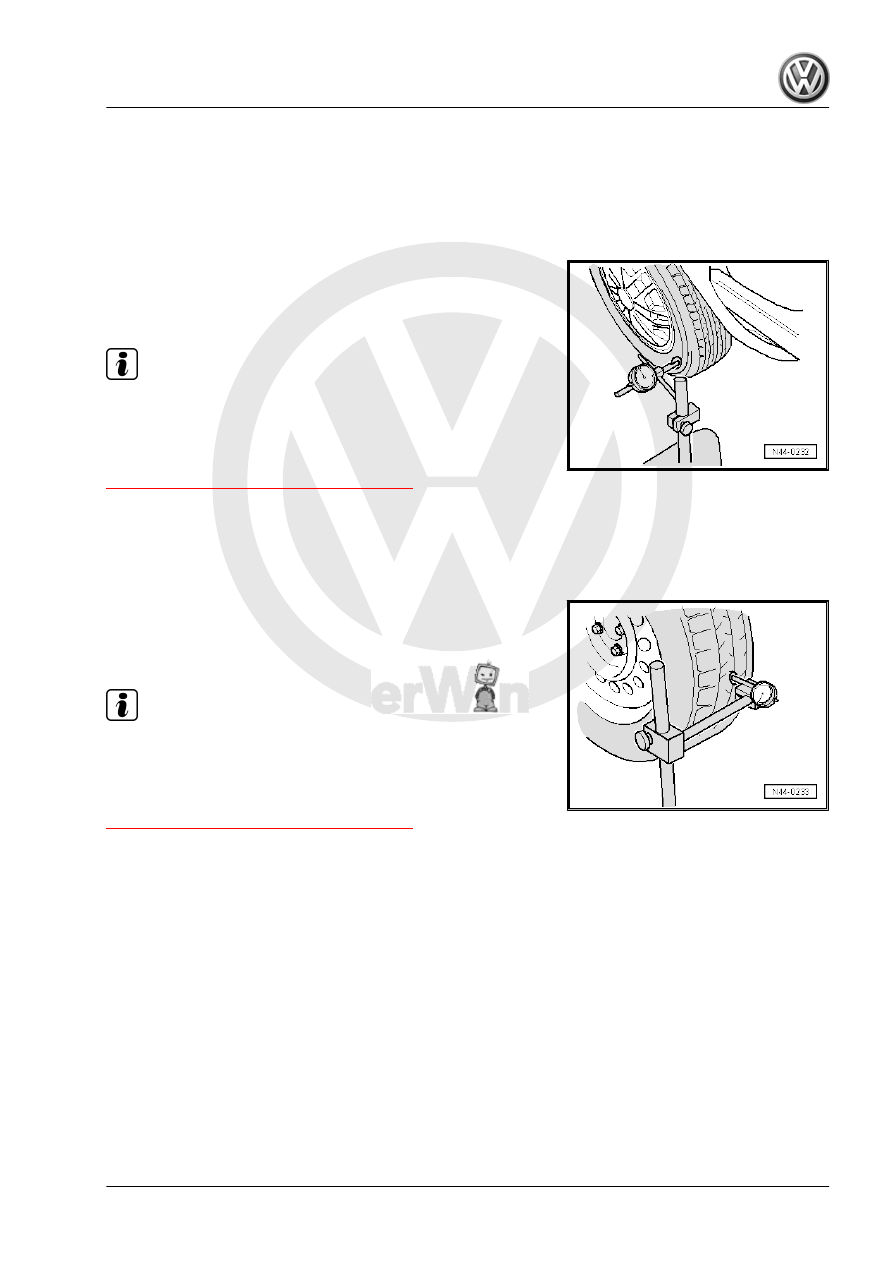Volkswagen Golf / Golf GTI / Golf Variant. Manual - part 883

4.5.2
Wheels and Tires, Radial and Lateral
Run Out, Checking with Tire Dial Gauge
Checking Lateral Run-Out
– Preload the Tire Dial Gauge approximately 2 mm.
– Position the Tire Dial Gauge on the side wall of the tire.
– Rotate the wheel slowly.
– Note the smallest and the largest dial readings.
Note
If the difference is greater than 1.3 mm, the lateral run-out is too
great.
In this case, lateral run-out can be reduced by matched mounting
of the tire. Refer to
⇒ “4.7 Wheels and Tires, Matching”, page 318
Peak values on the Tire Dial Gauge due to small irregularities in
the rubber may be disregarded.
Checking Radial Run-Out
– Preload the Tire Dial Gauge approximately 2 mm.
– Position the Tire Dial Gauge on the tread of the tire.
– Rotate the wheel slowly.
– Note the smallest and the largest dial readings.
Note
If the difference is greater than 1 mm, the radial run-out is too
great.
In this case, radial run-out can be reduced by matched mounting
of the tire. Refer to
⇒ “4.7 Wheels and Tires, Matching”, page 318
4.6
Rim Radial and Lateral Run-Out,
Checking
– Mount the rim on the Balancing Machine .
– Use the Wheel Centering System Adapter - VAS5271- .
– Preload the Tire Dial Gauge approximately 2 mm.
– Turn the rim slowly.